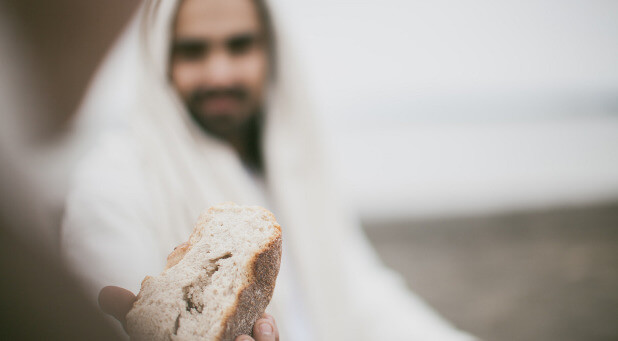When I really started examining what I was eating, I went back to the Bible—my playbook—for some guidance as to what I should or should not be eating. I mean, Jesus had to be pro food, right?
He was human as well as divine, so He had to eat while He was here on earth. But what did He eat? I know He created the Milky Way, but I’m pretty sure He wasn’t munching on Milky Way candy bars.
What I discovered is that even though the Bible does not tell us everything Jesus ate, food was on His mind and was a topic of concern during His ministry. He used food in His illustrations, as evidenced by parables such as the sower and the seed (Matt. 13:3-9), faith and the mustard seed (Matt. 13:31-32), and the great banquet (Matt. 22:2-14).
He used wheat fields to depict a spiritual harvest that was ready to be reaped (John 4:35). He performed miracles with food, such as the feeding of the 5,000 with five loaves of bread and two fish (Mark 6:30-44). Another time, when the disciples were on the boat fishing, He told them to cast their nets into the water. They had caught nothing that day, but after following His command, they reaped an extraordinary take of fish (Luke 5:1-7). Even Jesus’ first miracle involved food, when He turned water into wine at a wedding feast in Cana (John 2:1-11).
Perhaps Jesus’ most important illustration with food is the one He used with His disciples during their last Passover meal together to explain what would happen when He died on the cross. This is a practice that continues today in the taking of Communion, or the Lord’s Supper (Matt. 26:17-30; Mark 14:12-26; Luke 22:7-39; John 13:1–17:26). And just think about that great feast God has promised up in heaven at the time of the marriage supper of the Lamb (Rev. 19:6-9).
Jesus was all about food, and His desire is for us to be fit and healthy—not take our food away.
He just wants us to make healthy choices when it comes to eating. Not only did Jesus talk about food, but as a member of the Trinity, He also created food for us to enjoy. In Genesis 1:11, God the Father said, “Let the earth bring forth grass, the herb that yields seed, and the fruit tree that yields fruit according to its kind, whose seed is in itself, on the earth.”
In Genesis 1:29, He told Adam, “See, I have given you every herb that yields seed which is on the face of all the earth, and every tree whose fruit yields seeds; to you it shall be for food.” These verses show that God wants us to enjoy the food we eat. He created us with an average of 10,000 taste buds and placed them along the path our food travels when we are eating it.
Think about this for a moment. God chose to put those taste receptors—called papillae—in that location so we could enjoy the tastes of the wonderful foods He created for us to enjoy.
God’s plan has always been for the bulk of our diet to come from “living food”—foods such as fruits and vegetables that are uncooked, unrefined and unprocessed. Chips, soda, cookies and candy do not fit into this category. Many of these “dead foods” can last several years without going bad. If you don’t believe me, just check out the “use by” date on a box of macaroni and cheese and see how long it can last.
It’s time to clean house. Start by taking stock of the food you currently have. Survey how much of it is living food and how much of it is dead food. Get a garbage can, open the doors of your cupboards and pantry, and start tossing out the junk food. Get it out of your kitchen. Start eating living food to live!
Steve Reynolds is the senior pastor of Capital Baptist Church in Annandale, Va. He is the author of the books Bod4God and Get Off the Couch. He is also the creator of the Losing to Live Weight-Loss Competition. Steve has lost more than 120 pounds and has led his church to lose more than nine tons of weight.














































